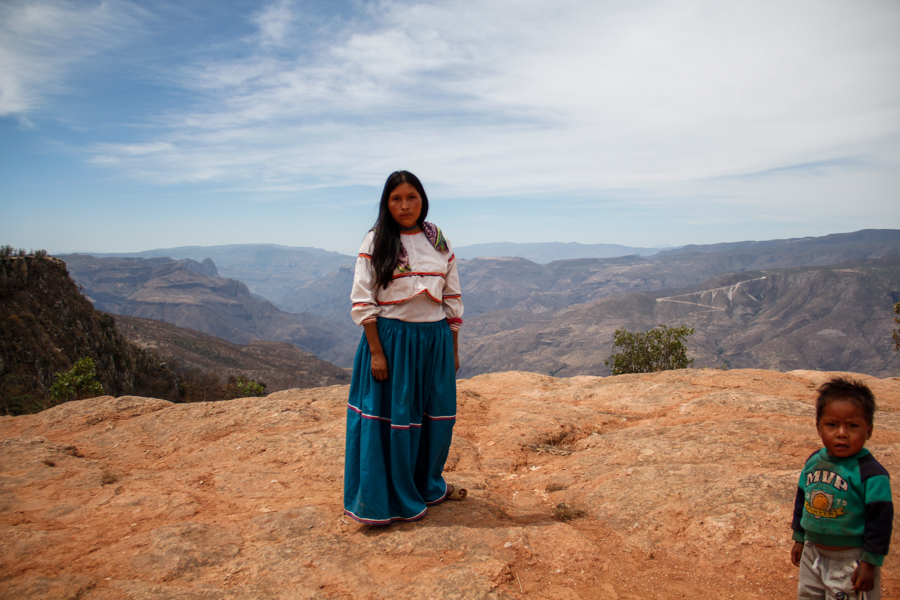For centuries the Wixarika people have occupied the lands of Western Mexico. This indigenous group, directly related to the Yuto-Azteca tribes, has lived an independent life away from the big empires of Mesoamerica, encouraging the development of a solid and unique identity in the region. At the time of the conquests, the Wixarika people found refuge in the mountains of the Sierra Madre Occidental range, which permitted them to remain unnoticed by the Spanish due to the difficulty of access, and safeguarded their identity and their traditions in utmost purity.
It was not until years later that the Wixarika people allowed the presence of Franciscan friars in the area, which resulted in the integration of Christian ceremonies and a religious syncretism between Christianity and the Wixarika worldview.
Each year different festivities related to the Wixarika cosmovision of life are celebrated in the main ceremonial center of the Wixarika people. One of the most important festivities is the celebration of the Wixarika’s Holy Week, marked by the return of pilgrims from the holy land: Wirikuta. According to the Wixarika cosmovision, it is believed that the sun rises up for the very first time in Wirikuta and it is the place where all deities and ancestral spirits inhabit. And for this reason, every living creature in Wirikuta is considered to be equally sacred. Initially, the Wirarika pilgrimage began at the Pacific coast, in the state of Nayarit, formerly known as Tatéi Haramara (Our Mother, the Sea) and ended at the point where the sun rises up for the first time (Reunax), the current Burned Hill, located in the San Luis Potosi plateau.
Nowadays, the pilgrimage is done with the support of different means of transportation in order to recreate the mythic walk. On the way, rituals are carried out with the help of Maraka’ames (Shamans), ending with the picking of Hikuri (Peyote), brought back to their communities in order to regenerate the cosmogenic cycle of life.
I had the chance to attend the Wixarika Holy Week, which took place at the ceremonial center of Tateikie, also known as San Andrés Cohamiata. This small community is located in the mountains of the Sierra Madre Occidental. Getting to the location is not an easy task. When the second day begins, the town closes its doors to all foreigners. Those who had the chance to arrive on the first day are allowed to stay until the end of the sixth day, when the town’s doors are open again.
When I first arrived, the unbreakable rules of the festivities were explained to me, which included the prohibition of taking any pictures of rituals and ceremonies during the third, fourth and fifth day, under threat of ending up in the local jail (Cepo). However, I was allowed to attend all ceremonies and cultural events in town.
For a week, the ceremonial center of Tateikie fills with a mystic feeling. Each passing day new ceremonies and rituals are performed, and, every night, Tetewari (Our Grandfather, the Fire) must be watched. For those who need to work on themselves, Peyote sessions take place under the supervision of a Maraka’ame. For the Maraka’ame, heavy consumption of Peyote helps them as a way to reach a high conscious state of mind and also allows them to perform different rituals, ceremonies and healing sessions.
Everyday processions around town are carried out, the figure of the Hikuri, the Deer and the Corncob can be seen everywhere: on Wixarika clothes as well as on their outstanding and unique jewelry. Some Maraka’ames even carry with them deer horns and corncobs while eating Peyote. Those three iconic figures are the main symbols of Wixarika life. The Deer represents faith; the mythical animal that raised the sun in the sky with its horns became the most iconic animal in the Wixarika wordview. The Corn primarily portrays agricultural development, food and livelihood. Finally, the Hikuri is a teacher and a guide. The whole cosmovision of the Wixarika people is based on this psychotropical cactus.
When the sun goes down on the fifth day, the whole town gets ready to spend the night awake and on watch. Cows and goats are tied to wooden posts that have been placed in the main square of Tateikie. During the night the animals are blessed and watched over by the Maraka’ames. At the end of the night more than 30 cows and 15 goats are ready to be sacrificed as an offering to deities in exchange of goods and wealth; the ceremony officially begins with the first sunlight.
A week has passed and the communities who came to take part and witness the festivities of Wixarika Holy Week get ready to start the journey of their way back home. Most of them came to Tateikie by foot and by foot they will return. It will be from a one- to a three-day walk in the mountains to reach their own communities.
For me, witnessing the Wixarika Holy Week was a whole new experience and a true demonstration of how indigenous tribes have such a complex and unique culture, a completely different lifestyle and a perspective of life that is not always appreciated or even understood. The Wirrarika culture is the closest we can get to a time capsule from pre-Columbian times, that shows us what really matters is not found in materialism and consumerism, but rather in our inner world.
By David Cordova
[su_custom_gallery source=”media: 8126,8116,8117,8114,8121,8122,8115,8128,8129,8120,8130,8119,8118,8127,8123,8124,8125,8132,8131″ link=”lightbox” width=”750″ height=”550″ title=”never”]
